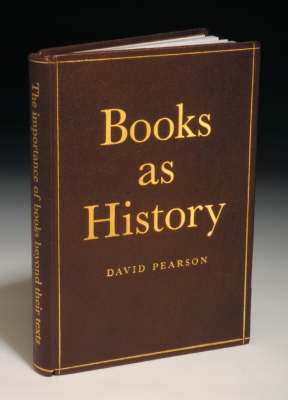Books have been hugely important in human civilisation, as instruments for communicating information and ideas. The digital age is challenging their ongoing existence - although the e-book has not yet taken over from print on paper, the landscape is changing all the time, with more and more of the traditional functions of books being performed electronically. People usually think of books in terms of their contents, their texts, with less thought for books as artefacts. In fact books may possess all kinds of potentially interesting qualities beyond their texts, as designed or artistic objects, or because they have unique properties deriving from the ways they have been printed, bound, annotated, beautified or defaced.David Pearson explores these themes and uses many examples of books from the Middle Ages to the present day to show why books may be interesting beyond their texts. As the format of the book becomes history - as texts are increasingly communicated electronically - we can recognise that books are also history in another, significant way.
Books can develop their own individual histories, which provide important evidence about the way they were used and regarded in the past, and which make them an indispensable part of the fabric of our cultural heritage. This book will raise awareness of an important aspect of the life of books in the context of the ongoing debate about their future. Extensively illustrated with a wide range of images, it will not only be approachable but also thought-provoking.
- ISBN10 0712349235
- ISBN13 9780712349239
- Publish Date 28 February 2008
- Publish Status Out of Print
- Out of Print 12 November 2010
- Publish Country GB
- Publisher British Library Publishing
- Imprint The British Library Publishing Division
- Format Hardcover
- Pages 224
- Language English
